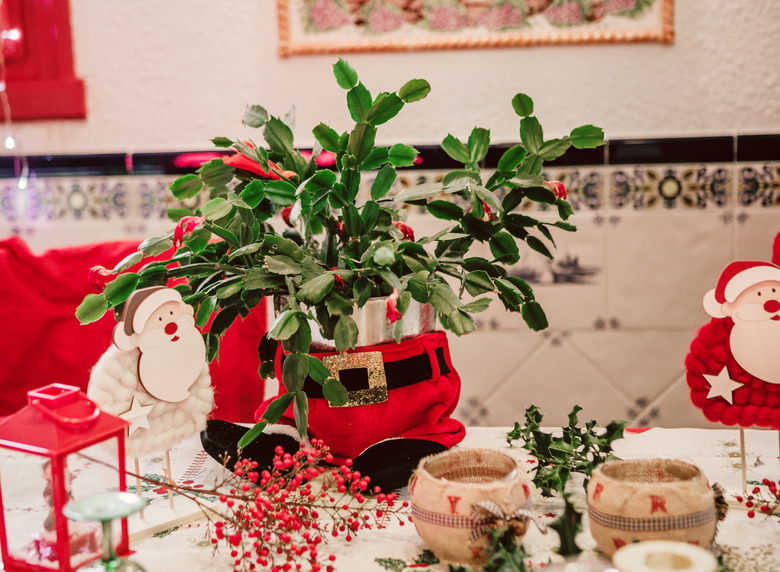How To Transplant A Christmas Cactus
There is something magical about a Christmas cactus (Schlumbergera truncata), which has bright crimson blossoms that don't appear until the holidays. It's even more amazing when you consider that this plant is a jungle cactus — an air plant that grows on rocks or trees in its native realm. It fills with flowers in the middle of winter, when the landscape may be white with snow.
Although the Christmas cactus can grow outdoors in the warmest zones in the United States, it is most commonly grown as a succulent-style houseplant. Like all houseplants, at some point, it will need to be repotted.
Things Needed
How to Transplant a Christmas Cactus
1. Act in Late Spring
Transplant your Christmas cactus in late spring after the blooms are spent. Although you may be eager to do the transplant before the cactus puts on its holiday show, it is not a good idea to transplant a Christmas cactus while it is blooming or immediately afterward since the plant needs a few months to recover after flowering.
2. Check the Roots
Check the roots of your Christmas cactus to see whether it needs repotting. The plant won't need frequent repotting — no more than once every three or four years — and you shouldn't change its container unless the roots are really too large for the current pot. If they are, you will see them start to poke out of the current pot's drain holes. Otherwise, the plant doesn't mind being pot-bound, and it tends to bloom more profusely.
3. Pick a Container
Select a new container for the Christmas cactus that is only an inch or two larger in diameter than the current one. This plant likes a cozy pot, so you don't want the new one to be several sizes larger. Take care that the new container has generous drainage holes in the bottom. Although the cactus likes humidity, it will die of root rot if it is left sitting in wet soil. The best type of pots for Christmas cactus are clay because of their porous nature.
4. Use Peat-Based Potting Soil
Repot the Christmas cactus using peat-based potting soil. It should contain perlite and/or coarse sand to allow for rapid drainage. The ideal potting soil for this plant will be half peat moss, one-quarter soil and one-quarter perlite or coarse sand. Alternatively, use potting soil especially designed for cactus or succulent plants.
5. Withhold Water Temporarily
Don't offer your Christmas cactus any water for a few weeks before the transplant date. This will help the plant avoid root rot after the transplant.
6. Transplant Very Carefully
Put the Christmas cactus in its current container on a work table beside the new container. Pour several inches of potting soil into the new container. Tip the Christmas cactus on its side. Holding the base of the plant, slide the root ball out of its container. Squeeze the sides of the container if it is hard to get it out. Once it is out, loosen the outer roots and prune off any that look limp. Shake off some of the soil. Then, place the cactus's root ball in the new container.
Add new potting soil around the edges of the container. Fill it up to about an inch from the pot rim. Water the Christmas cactus in its new pot but not too much. Overwatering at this point can damage the roots. Move the pot to a shady area for a few days or even a week until the plant is acclimated to its new home.
